TV Station KHB
49 días de vida y muerte
DC801404![]()
津波を撮ったカメラマン [KHB]
![]()
![]()
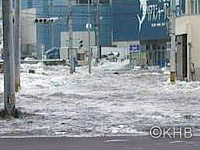
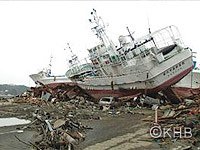
|Length : 24min. |Year : 2014 |
El 11 de marzo del 2011, el Gran Terremoto de Japón Oriental, de magnitud 9.0,
niveló el noreste de Japón. La ciudad de Kesennuma, de la Prefectura de Miyagi, fue destrozada. El subsecuente tsunami, y los incendios que resultaron de escapes de combustible, tuvieron como consecuencia la muerte o desaparición de hasta 1.500 personas.
Kenichi Chiba, un camarógrafo de la Higashi Nippon Broadcasting, y oriundo de Kesennuma, capturó increíbles imágenes del devastador tsunami a medida que iba envolviendo por completo su ciudad. Sus imágenes no demoraron en convertirse en noticia alrededor del mundo.
A pesar de que la familia de Chiba sobrevivió el desastre, el tsunami arrasó con su casa, sin dejar rastro de ella. Como un camarógrafo sin hogar, Chiba es un testigo de la lucha de la gente de su ciudad por reconstruir sus vidas quebrantadas.
Este documental es un diálogo con Chiba, mientras él filma los 49 días subsiguientes al desastroso terremoto. Aquí encontrarán la emocionante historia de la lucha de Chiba con la pérdida – tanto en lo personal, como en las pérdidas que rompen el corazón de sus conciudadanos.
Landslides and Deforestation -Moving Towards Future Forest Development
DC372220![]()
テレメンタリー2021 土砂災害と森林伐採-民家に迫る危険 [KHB]
![]()
![]()
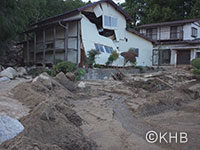
|Length : 25min |Year : 2022 |
Every year in Japan, typhoons and low-pressure fronts usher in heavy rains.
In October 2019, Typhoon Hagibis caused extensive damage in eastern Japan. In Marumori Town of Miyagi Prefecture alone, landslides occurred in 173 locations, leaving 12 people dead or missing. Why did the landslides occur one after another? An on-site investigation revealed that in some cases, the landslides were caused by "clearcutting," the complete removal of trees from large areas of forest. While the government is promoting a policy of subsidies to boost lumber productivity, experts on forest management and law have sounded the alarm, saying that large-scale logging is taking place on steep slopes and areas close to homes, triggering disasters.
Children’s Message of the Devastating Earthquake to the Next Millennium
DC371514![]()
女川いのちを守る会~1000年後へのメッセージ~ [KHB]
![]()
![]()
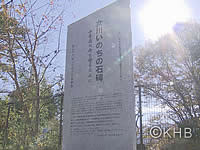
|Length : 24min |Year : 2015 |
When the Great East Japan Earthquake struck, waves as high as 14.8 meters ravaged Onagawa Town. 827 lives, nearly 10 percent of the population, were lost and 70 percent of the town buildings were destroyed.
The seventh graders of Onagawa Middle School decided to do something to pass on the lessons of this tragedy to future generations. With the motto “to protect the lives of 1000 years from now,” they continue their work and hope to reach their goal of erecting 21 stone monuments by the time they are 20 years old.
Daring Attepmt of Oystermen to Overcome Earthquake Adversity
DC371412![]()
三陸カキ 真の復興に挑む [KHB]
![]()
![]()
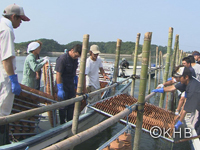
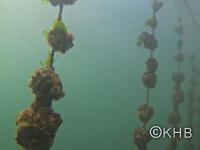
|Length : 24min. |Year : 2014 |
The oystermen on the Sanriku Coast of Japan suffered great losses in the tsunami wrought by the 2011 Tohoku Earthquake. A good 90% of the oyster cultivation facilities in Miyagi Prefecture, nearly 12,000 of them, were lost. There are men here who are attempting to bounce back from this adversity through a new venture. They consist of Hiroaki Saito, operator of an online oyster sales company, and 20 oystermen from six coves within the prefecture.
The Sanriku oyster industry has been plagued by problems such as an aging population and a lack of successors. In order to create a life better than that they led before the disaster, they must produce and market greater numbers of oysters in their shell. To that end, they decided to adopt cultivation methods used by oystermen in France, one of the world’s leading oyster producing nations.
This program chronicles the attempts by these oystermen to restore the cultivation of Sanriku oysters.
732 days: The lives of 3 orphans post earthquake
DC371311![]()
3人で生きる 震災孤児 兄弟が歩んだ732日 [KHB]
![]()
![]()
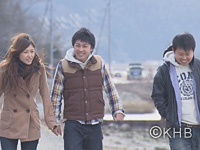
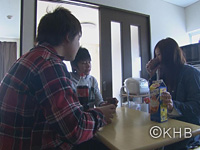
|Length : 24min. |Year : 2013 |
March 11, 2011. The huge tsunami that hit in the Tohoku earthquake swept away the parents of many children, leaving large numbers orphaned. There are more than 241 children in Miyagi, Iwate and Fukushima prefectures whose parents were either killed in the disaster or remain missing. How did these children face the aftermath of the disaster, and move on without their parents?
Shohei Takeyama (19 at the time of the disaster), lives in Ishinomaki City in Miyagi Prefecture, and lost both his parents and grandfather to the tsunami. His younger sister Yuuki is a high school student, while brother Naoki is in junior high school.
"All I want is for us to live a normal life. At the very least, I want to give my brother and sister a normal upbringing. I feel it is what I should do for my parents."
Shohei decides to become his siblings' legal guardian. Initially, Naoki and Yuuki were taken to live at an aunt's home in Ishinomaki, but once Shohei turns 20, he becomes their guardian by law (as they are both still minors), in place of their parents.
A year after the disaster, they leave their home in Ishinomaki and move into an apartment together in Iwate Prefecture's Sendai City.
Yuuki enters the same university as Shohei, and is busy with study as well as part time work. Naoki has changed schools, and is taking the first steps toward high school entrance exams, while Shohei is in the middle of intense job hunting. He hopes to find work at a company with no risk of being transferred outside Iwate Prefecture, so they can continue living together.
The three siblings suddenly had their family torn apart forever on that fateful day. This is a document of the reality they face living without their parents over the two years following the disaster: holding the memories of their parents in their hearts, while supporting each other as a family.














